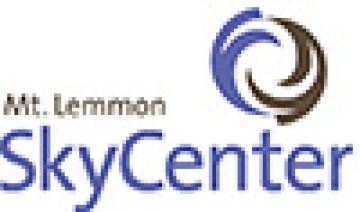Tucson and various nearby mountaintops in Southern Arizona are especially active in astronomy and have many related attractions. They are listed below and include references to talks that occur during the academic year. Each of the websites listed should have the information needed to schedule tours - including contact numbers.
Richard F. Caris Mirror Laboratory

The Richard F. Caris Mirror Laboratory, located under Arizona Stadium, now offers tours to the public. This tour will provide visitors with a behind the scenes look at cutting-edge optical technology and the revolutionary spin-casting processes that are involved in making giant telescope mirrors, from construction of the mold, to spin casting, grinding and polishing.
Mt. Lemmon Sky Center

The Mt. Lemmon SkyCenter, located just north of Tucson on the summit of Mt. Lemmon, is a unique science learning center. Check their website for information about tours of their facility.
Mt. Hopkins - Fred Whipple Observatory

Fred Lawrence Whipple Observatory Visitors Center features displays and exhibits on astronomy and astrophysics, natural science, and cultural history. It is 56 kilometers (35 miles) south of Tucson and just within the boundary of the Coronado National Forest at the base of Mt. Hopkins in the Santa Rita Mountains. Mount Hopkins is located off Interstate-19 north of Tubac, but south of Green Valley.
Mt. Graham International Observatory

The Mount Graham International Observatory, operated by Steward Observatory at the University of Arizona consists of three telescopes: the 1.8-meter Vatican Advanced Technology Telescope (VATT), the 10-meter Heinrich Hertz Submillimeter (Radio) Telescope, and the 8.4-m x 2 Large Binocular Telescope, the world's most powerful telescope. Public tours are conducted by reservations, beginning about mid May through early November, weather permitting. For information and reservations, please contact Discovery Park in Safford. Mt. Graham is about two-hours drive east of Tucson.
Exhibits on the University of Arizona Campus
- The lobby area of the Sonett building on the northwest corner of the N. Cherry Avenue and the UA mall there is an exhibit of several Mars Missions supported by NASA. space missions in which the UA is currently involved.
- The Lunar and Planetary Lab (just east of the Flandrau Science Center) has an area on the fourth floor with posters and displays describing various space missions.
- The Phoenix Mars Mission, operated by the Lunar and Planetary Lab, has an exhibit area as well. It is located at 1415 N. 6th Avenue, just northwest of the UA campus.
- The Flandrau Planetarium offers astronomy-related exhibits for children of all ages.

